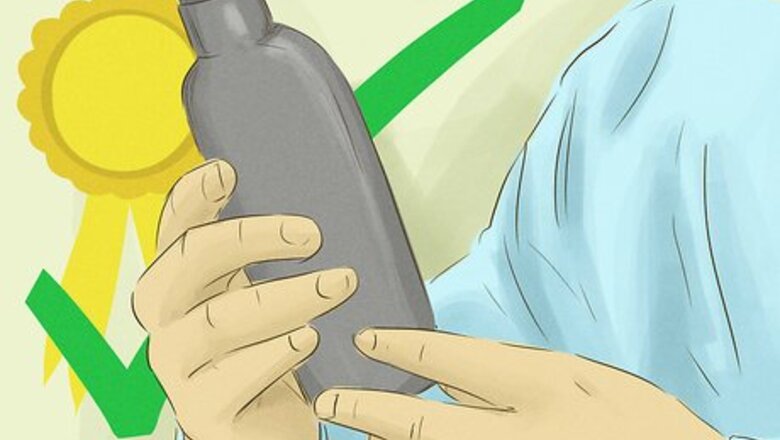
views
X
Expert Source
Karen LeightProfessional Hair Stylist
Expert Interview. 13 November 2020.
We'll walk you through all the different ways you can use glycerine in your hair care routine, like as a hair spray, hair mask, and even as a conditioner additive.
- Make a glycerine spray for hair with distilled water, rose water, vegetable glycerine, and olive oil. Shake the mixture before spritzing it onto your hair.
- Make a glycerine hair mask with 1 egg, castor oil, glycerine, and apple cider vinegar.
- Enrich your conditioner by pouring .34 fl oz (10 mL) of glycerine into a 1.7 fl oz (50 mL) conditioner bottle.
Creating a Glycerine Spray
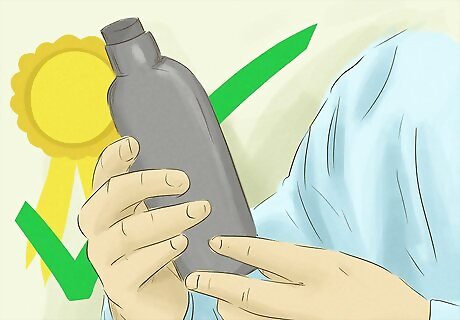
Put ½ cup of distilled water in a spray bottle. Find a spray bottle with a mist setting. You don’t want to spray a concentrated amount on a small area of your hair, but instead, you want a gentle mist over all your locks. Put ½ cup (118 mL) of distilled water into the spray bottle. Distilled water is better than tap water, which contains minerals that can dry out your hair.
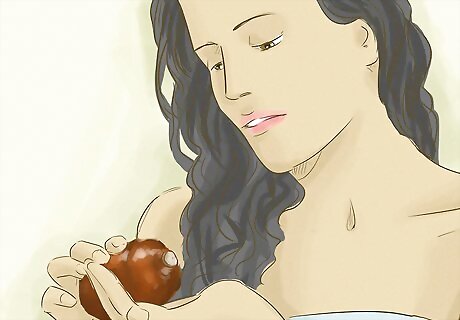
Put ½ cup of rose water in the bottle, if desired. Rose water has a lovely scent that will keep your hair smelling great all day. Add ½ cup (118 mL) of rose water to the spray bottle in addition to the distilled water, if desired. If you don’t want to use rose water, you can add several drops of your favorite essential oil, like lavender or orange, to scent your hair spray instead. You can find rose water at drugstores and superstores, as well as online.
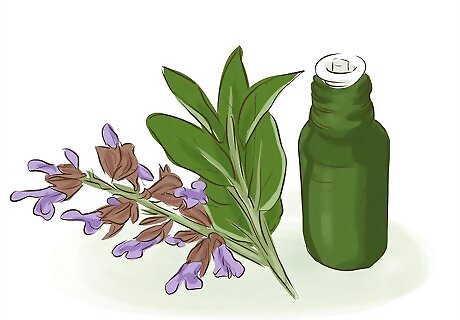
Add 2 teaspoons of vegetable glycerine and 1 teaspoon of olive oil. Choose a vegetable-based glycerine, such as one derived from coconut oil or shea butter. Add 2 teaspoons (9.8 mL) of vegetable glycerin and 1 teaspoon (4.9 mL) of olive oil to the spray bottle to complete this concoction. Vegetable glycerine can be found at your local drugstore or superstore, as well as online.
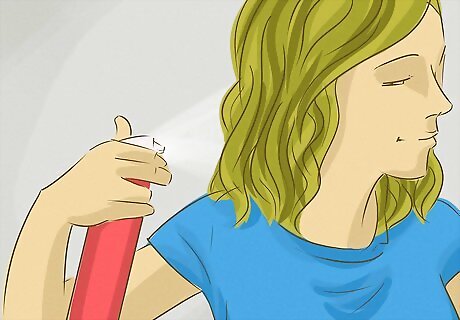
Shake the bottle then spray the mixture onto damp hair. Thoroughly shake the bottle before you use it each time to combine the oil and glycerine with the other ingredients. Then, spray the mixture onto your hair when it is still damp from bathing or showering. Use enough to lightly coat your hair, but not so much that it becomes sticky or difficult to style. Experiment with different amounts until you find out how much works perfectly for your hair type.
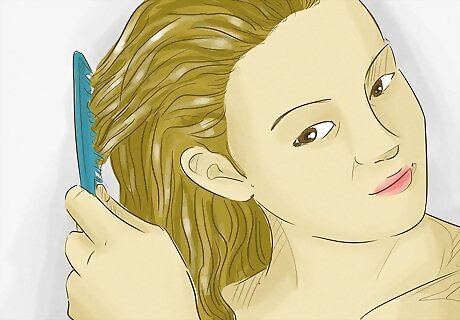
Comb through your hair, then style it as usual. To evenly distribute the glycerine spray through your hair, run a wide-tooth comb through your hair from root to tip. Then, style your hair as you normally do.
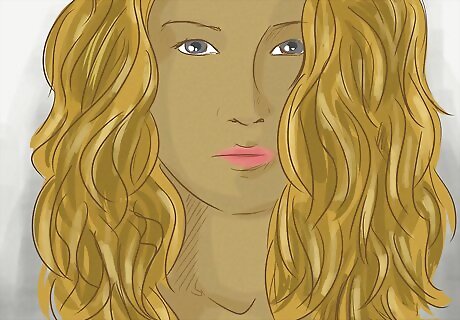
Refresh your hair with the spray mid-day, if desired. You can use this glycerine hair spray when getting ready in the morning as well as throughout the day to refresh your locks and tame flyaways. Spray a small amount of the mixture onto your hair, then comb through it for straight hair, or use your fingers to reshape your curls.
Making a Glycerine Hair Mask
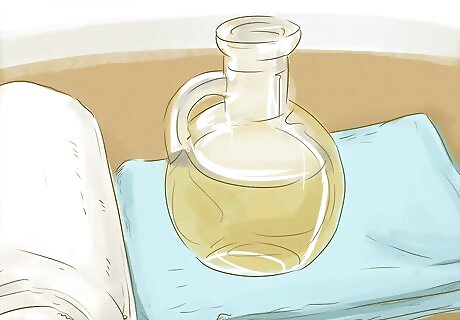
Blend 1 egg and 2 tablespoons of castor oil in a small bowl. To make a moisturizing hair mask, beat one egg in a small bowl. Then, add 2 tablespoons (30 mL) of castor oil to the bowl and stir the mixture. Castor oil can be found at your local superstore as well as online.
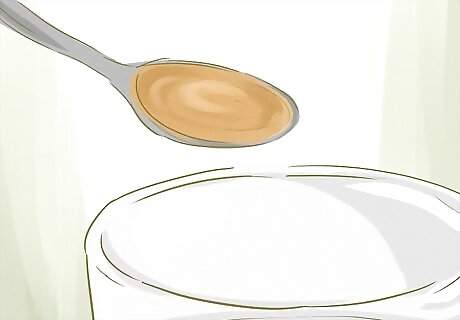
Add 1 teaspoon each of glycerine and apple cider vinegar. Put 1 teaspoon (4.9 mL) of glycerine and 1 teaspoon (4.9 mL) of apple cider vinegar in the bowl. Mix the solution thoroughly until all the ingredients are combined and smooth. If you like, you can also add 1 tablespoon (15 mL) of honey to the mask.
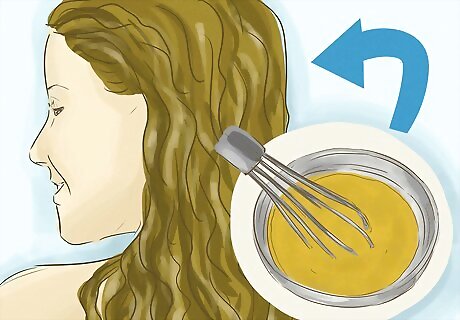
Apply the mask to your hair and massage it in. Use your hands or a pastry brush to apply this moisturizing hair mask to your tresses. Ensure you have an even coating from root to tip. Gently massage the mixture into your hair. You can repeat this treatment once or twice per week.
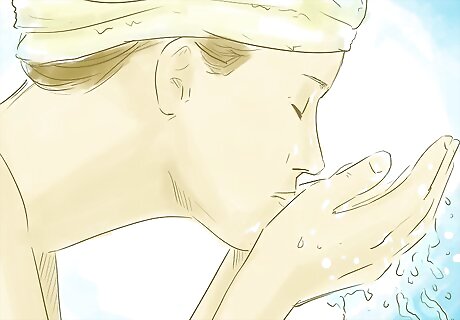
Wrap your hair in a warm towel and let the mask sit for 40 minutes. Heat a towel in the sunshine or in your clothes dryer and then wrap it around your hair. The heat helps the ingredients in the mask penetrate your hair. Leave the mask on for 40 minutes.
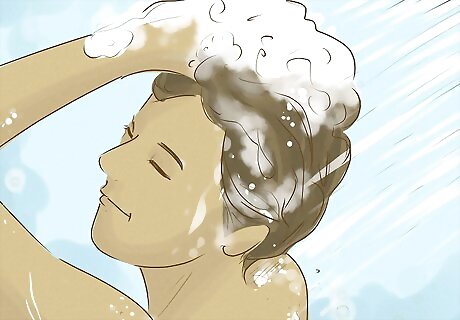
Wash your hair. Use a mild shampoo that doesn’t contain parabens or sulfates, which can damage your newly-moisturized locks. There’s no need to condition your hair -- the mask has already done that!
Adding Glycerine to Your Conditioner

Pour 10 mL of glycerine into your 50 milliliters (1.7 fl oz) conditioner bottle. Remove the cap from your conditioner bottle and place a small funnel in the top opening of the bottle. Carefully pour 10 milliliters (0.34 fl oz) of glycerine through the funnel into the conditioner bottle. If your conditioner bottle is larger or smaller than 50 milliliters (1.7 fl oz), adjust the amount of glycerine accordingly.
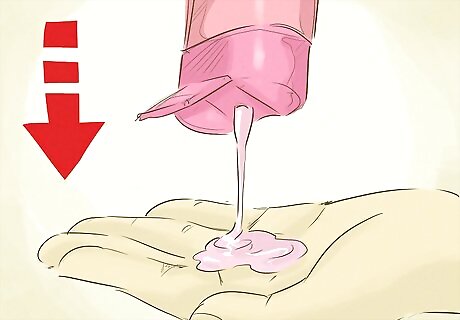
Shake the bottle thoroughly. Replace the cap on the conditioner bottle. Shake the bottle thoroughly before each use to make sure the conditioner and glycerine are combined.
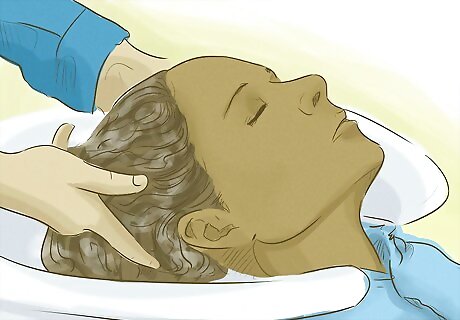
Condition your hair as usual. You can use this enhanced product just like you use regular conditioner. Simply apply it to your hair after rinsing out your shampoo. Leave it on for a few minutes, then rinse it out. You can style your hair normally.
Using Glycerine Effectively
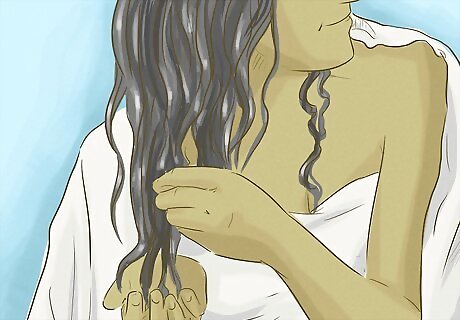
Dilute glycerine with water before using it on your hair. Glycerine is a very thick and syrupy substance. If you apply full-strength glycerine to your hair, you are likely to end up with a sticky mess. Always dilute glycerine with water or other hair-safe liquids, like conditioner, before applying it.
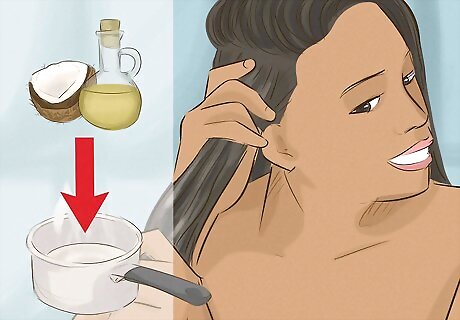
Opt for naturally-derived glycerine. Glycerine can come from plant products, like coconut oil and shea butter, as well as from animal fats. It can also be made synthetically. However, there may be some health risks associated with synthetic glycerine, so until more information is available regarding these risks you should avoid using synthetic glycerine.
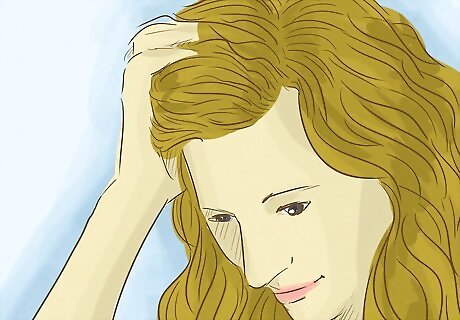
Check the humidity levels for the day. If the air is very dry in your area, instead of pulling moisture from the air into your hair, glycerine may in fact do the opposite and release moisture from your hair into the air. If the air is too humid, your hair may swell and retain too much moisture, which can cause it to frizz. So, if the humidity levels are significantly above or below average, use less glycerine than you normally would.



















Comments
0 comment